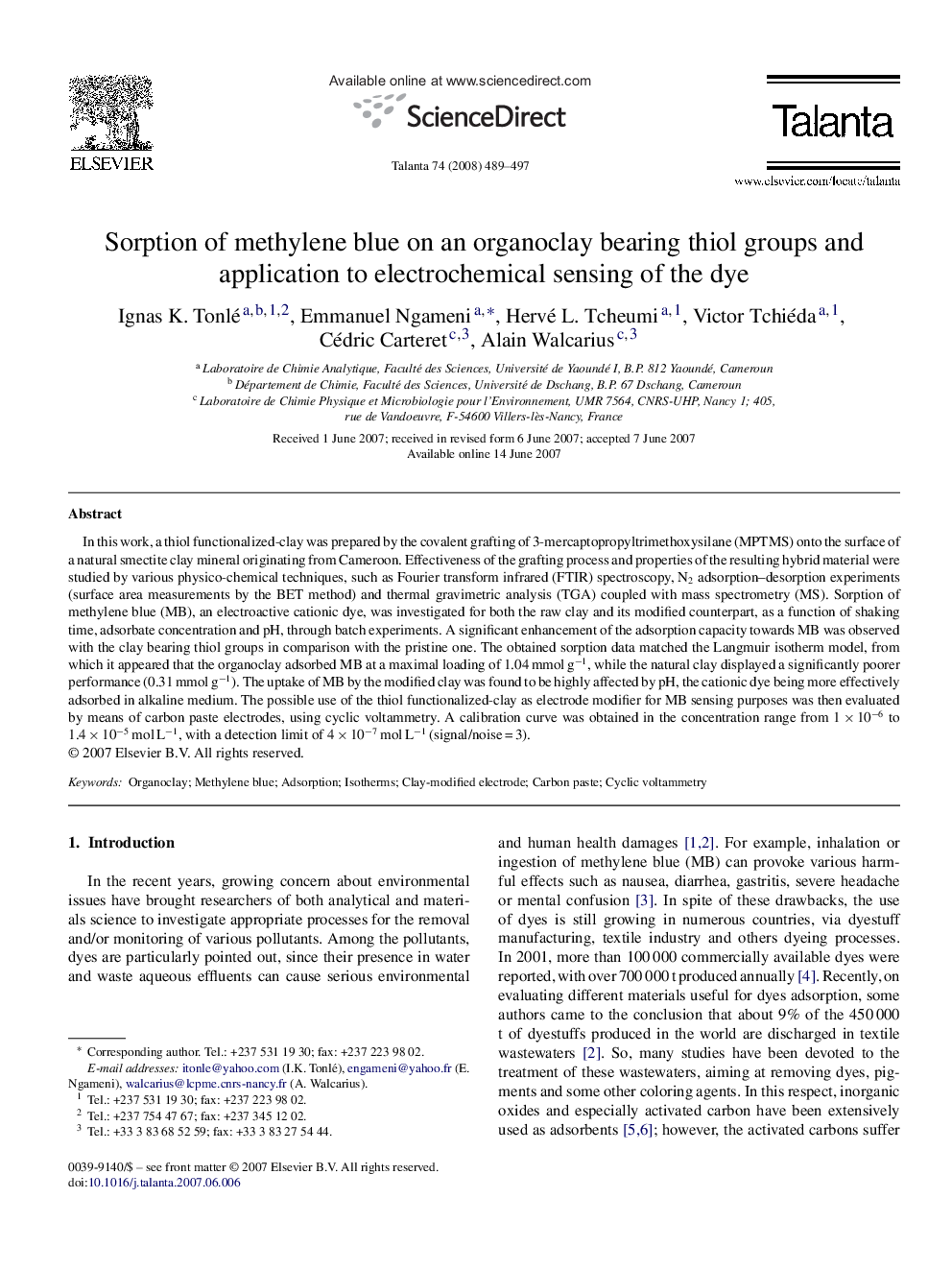| Article ID | Journal | Published Year | Pages | File Type |
|---|---|---|---|---|
| 1247074 | Talanta | 2008 | 9 Pages |
In this work, a thiol functionalized-clay was prepared by the covalent grafting of 3-mercaptopropyltrimethoxysilane (MPTMS) onto the surface of a natural smectite clay mineral originating from Cameroon. Effectiveness of the grafting process and properties of the resulting hybrid material were studied by various physico-chemical techniques, such as Fourier transform infrared (FTIR) spectroscopy, N2 adsorption–desorption experiments (surface area measurements by the BET method) and thermal gravimetric analysis (TGA) coupled with mass spectrometry (MS). Sorption of methylene blue (MB), an electroactive cationic dye, was investigated for both the raw clay and its modified counterpart, as a function of shaking time, adsorbate concentration and pH, through batch experiments. A significant enhancement of the adsorption capacity towards MB was observed with the clay bearing thiol groups in comparison with the pristine one. The obtained sorption data matched the Langmuir isotherm model, from which it appeared that the organoclay adsorbed MB at a maximal loading of 1.04 mmol g−1, while the natural clay displayed a significantly poorer performance (0.31 mmol g−1). The uptake of MB by the modified clay was found to be highly affected by pH, the cationic dye being more effectively adsorbed in alkaline medium. The possible use of the thiol functionalized-clay as electrode modifier for MB sensing purposes was then evaluated by means of carbon paste electrodes, using cyclic voltammetry. A calibration curve was obtained in the concentration range from 1 × 10−6 to 1.4 × 10−5 mol L−1, with a detection limit of 4 × 10−7 mol L−1 (signal/noise = 3).
